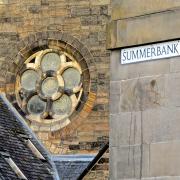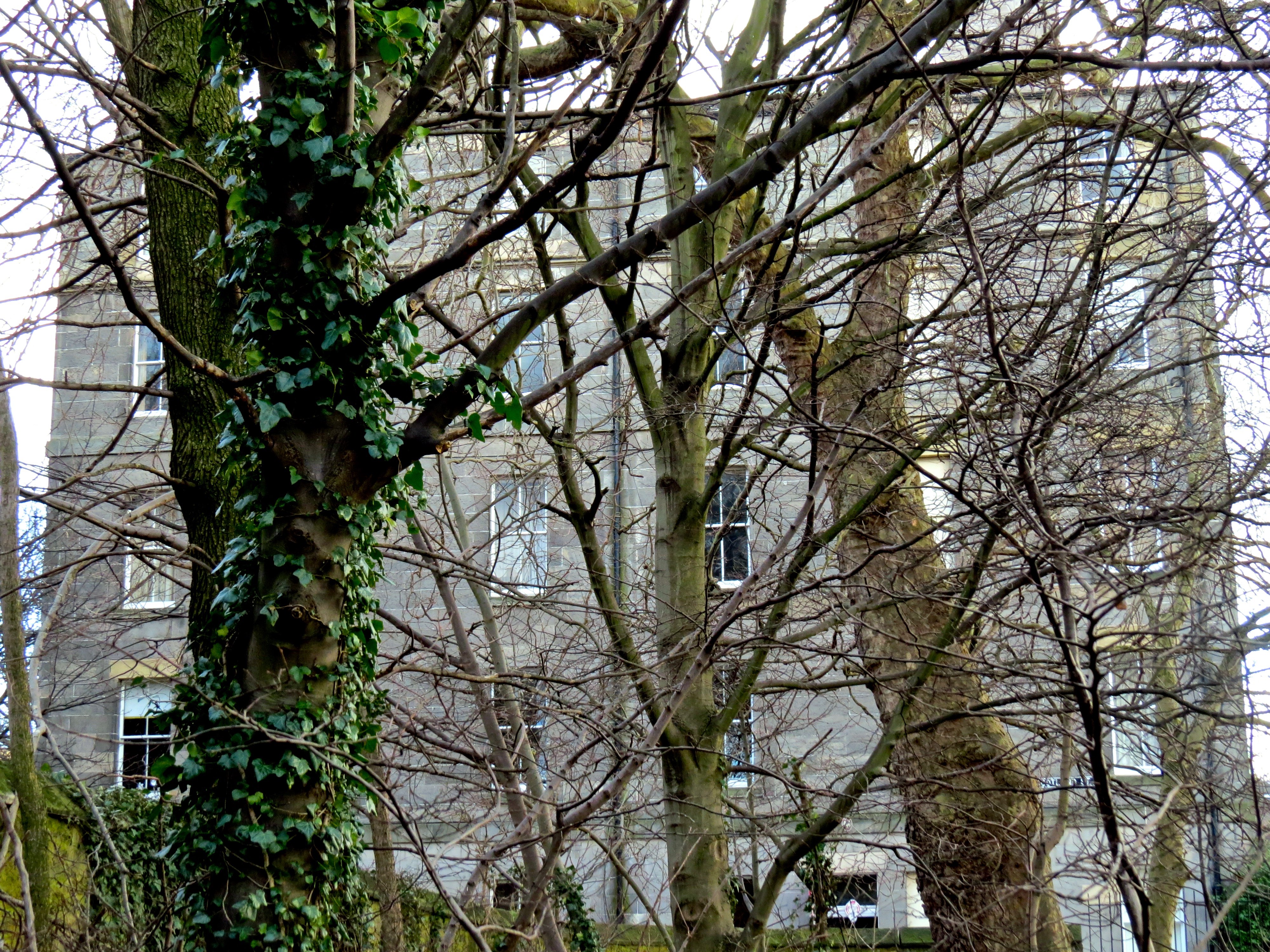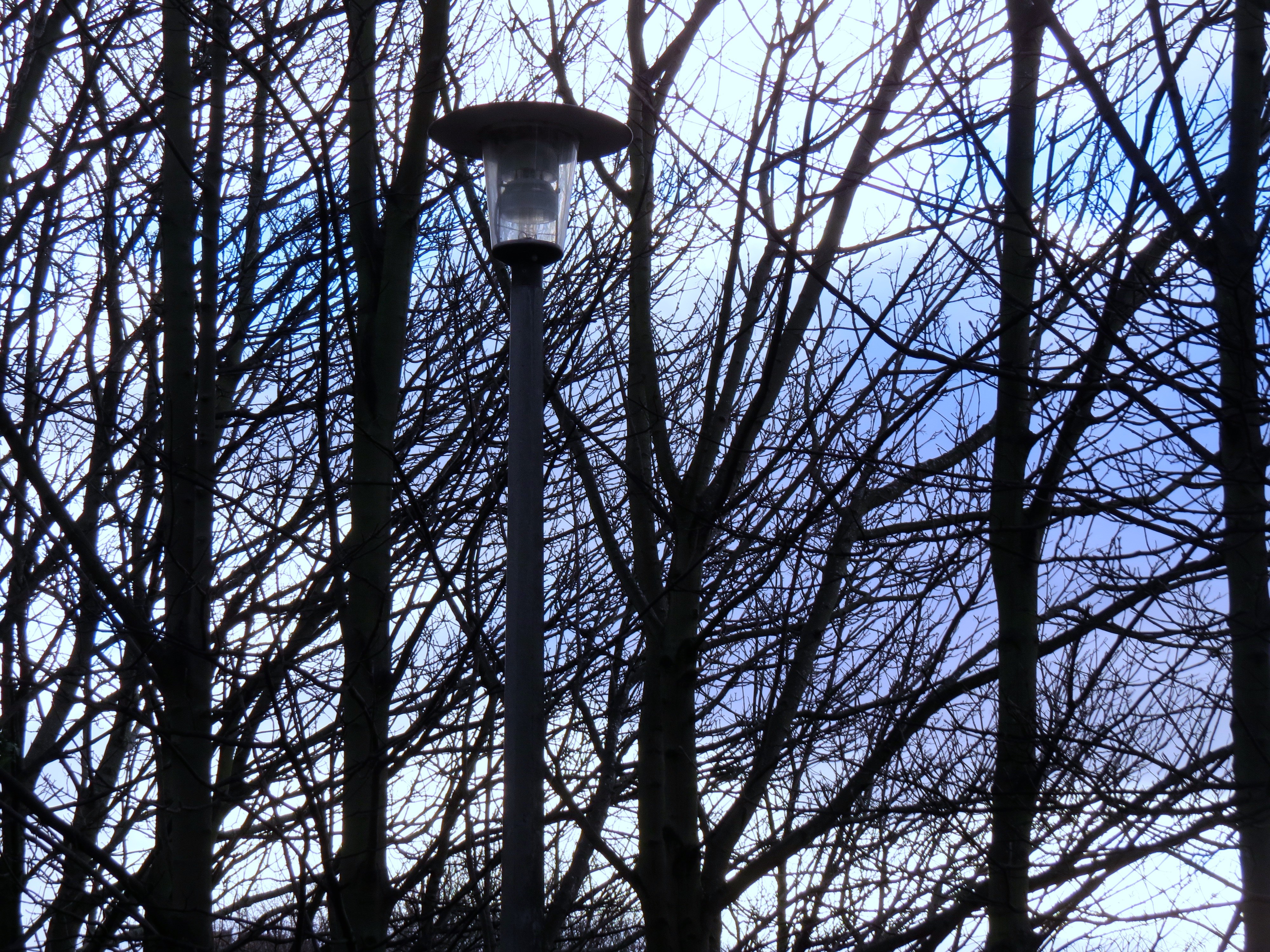
DAVID HILL ON A NEW TOWN STREET LIKE NO OTHER
O wild West Wind, I was recently compelled to recall your mighty caress while strolling, slantwise, along a turbulent Summer Bank.
Shelley had a point: you are the breath of being, and not just autumn's. The urban soundscape, while all too frequently a detraction, can still, sometimes, be an enrichment.
I usually make my way to this obscure recess of the north-eastern New Town by way of neighbouring Scotland Street. The latter is not a street that will detain you. It exists to provide egress from the New Town; an emergency exit chute for those overwhelmed, or quite possibly numbed, by the restrained elegance of the area.
But, if hurrying through en route to Canonmills, or perhaps heading Lethe-wards the scenic way, a moment or two's pause is merited, just around the corner.
Take a right at the bottom of Scotland Street, and you'll be on a – somewhat reduced – version of the same street. This coda, however, entails not simply an architectural downsizing from the area’s more rarefied parts, but also portends imminent acquaintance with concerns more elemental.

For this is the New Town not simply delivering valediction, but giving way, temporarily, to the primordial. Carry on, just beyond the reach of Scotland Street's tail, and you find yourself in a place not so much street as aperture: Summer Bank.
This little urban lane, with the dog-end of a Cornwallis Place tenement, is distinctly, and agreeably, incongruous. Narrow, walled, and arboreal, with a drop beyond its western fringe to King George V Park, it gives the impression of existing as a liminal space between the New Town and Broughton; of belonging to neither.

The reason for this is that, hemmed in by Scotland Street at one end, wearily regarded from behind barriers at the other, its tenor is particularly – and peculiarly – shaped by the wind.
When not animated by air currents, Summer Bank, usually devoid of traffic, seems reduced to a kind of uneasy half-existence of muffled park life and distant traffic, with perhaps, in late evening, the occasional hint of a spectral whistle floating in from Scotland Street station.
While all Edinburgh streets owe fealty to the breeze, this New Town nook has a different, more mature, relationship. It exists in symbiosis with the Anemoi. The street provides the wind gods with a stage on which to perform; they in turn endow the street with a purpose.
This side street like no other is not concerned with the Georgian fancies of neighbouring gentry. Rather, it is focused on the musical. Cutting through the street recently, I was again struck by the manner in which the wind sculpts its streetscape, narrates its story. It ceases to blow, and the street creeps back into the shadows.

Was the barring of through traffic belated official recognition that safe vehicular passage cannot be guaranteed in a street that flows into, and then out of, existence?
Neighbouring streets are less moved by seasons, less subject to meteorological terms and conditions. Their solidity provides greater resistance to natural vicissitudes. Summer Bank, however, is surrendered to the elements.
A vernal zephyr may provide the background music to a verdant spectacle, a gentle nuzzle by foliage, with diffused early evening sunlight projecting a shimmering silhouette onto the setted street.

Better still is autumn, when the muffled crackle of yielded leaves supplements the street’s regular orchestration. Winter, the season of the gale, is best: it opens to perception like a whirling dervish opens to God.
Some streets are overwhelmed by the breeze, Summer Bank lives by its breath: hear, O hear!
